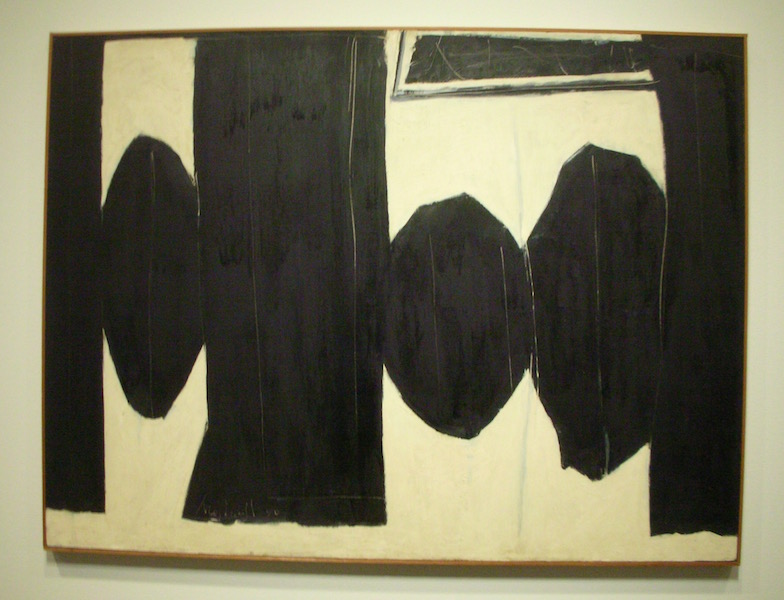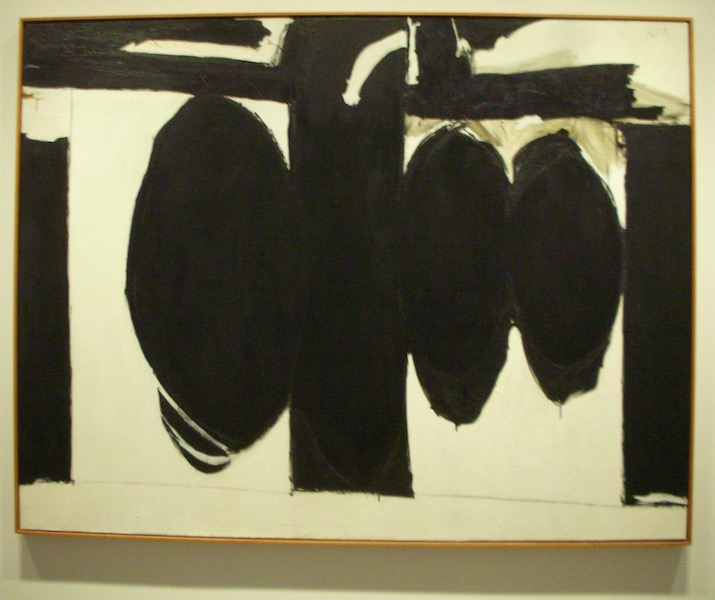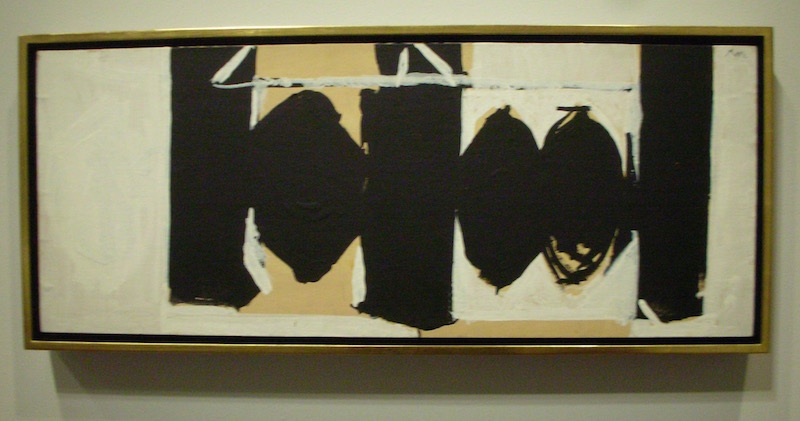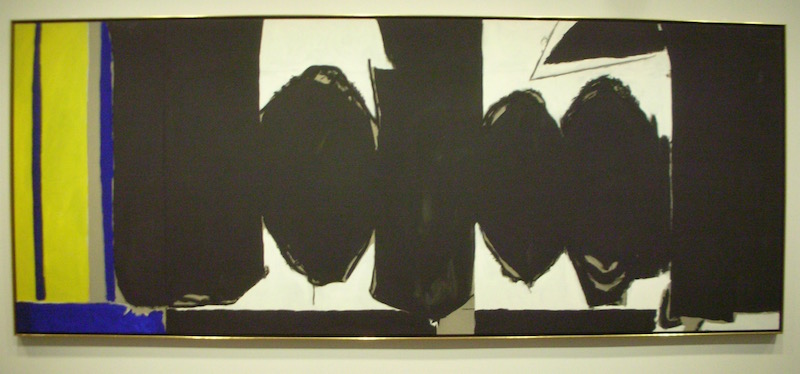MOTHERWELL, WITH CAVILS
I’ve long been an admirer-with-reservations about the work of Robert Motherwell (1915-91), presently the subject of a small show at the DeYoung Museum in San Francisco.
My admiration is based on his fairly early work–pieces such as “At Five In the Afternoon” from 1950,
or “Elegy to the Spanish Republic #57” from 1957-61. There is a primness about them–they haven’t the sense of explosive exploration that I get from Franz Kline, for example–but they are richly worked-out paintings, with each shape, each edge, each bit of surface, live and full of tension. It’s grand stuff, only imperfectly represented by these snapshots from the show. Sorry.
Wonderful as the paintings themselves are, I’ve always grumbled at the titles. “At Five in the Afternoon” refers to a poem by Frederico Garcia Lorca about the death of a famous bullfighter. Motherwell’s ovals, we are told, represent the testicles of dead bulls. This information has never cranked up the emotional temperature for me. If a painting is intended to evoke a theme of some sort, it ought to be apparent without reading the wall label. That doesn’t apply here. I would never have said Ah! Bull testicles! Tragic fate!
The Elegies to the Spanish Republic similarly fail to convince as historical reference. The context is broader, but it seems that we’re still looking at bull testicles. This doesn’t, for me, establish an elegiac mood. It seems merely a grab at something BIG so as to make the work seem somehow grander than it is. (In the entry of 6/14/15 I dinged Barnett Newman for naming a series of his rich but thematically opaque abstracts “Stations of the Cross.” I mean, c’mon.)
And so many similar pieces, decade after decade! You can see the strain as Motherwell struggled to vary his signature composition of bars and ovals. Some, as here–“Untitled (Elegy)”–1970-75, are merely sketches, toying with the theme of testicles or whatever; others, as below–“Elegy to the Spanish Republic (with Lemon-Yellow Panel)”– 1971, exude sweat in a search for some variety. The last Elegy in the DeYoung show is dated 1990.
In spite of all this, of course, a fair question is whether even a less-than-first rank Motherwell is nevertheless more interesting than first-rank works by other, lesser artists. One of those questions that viewers must answer for themselves.



